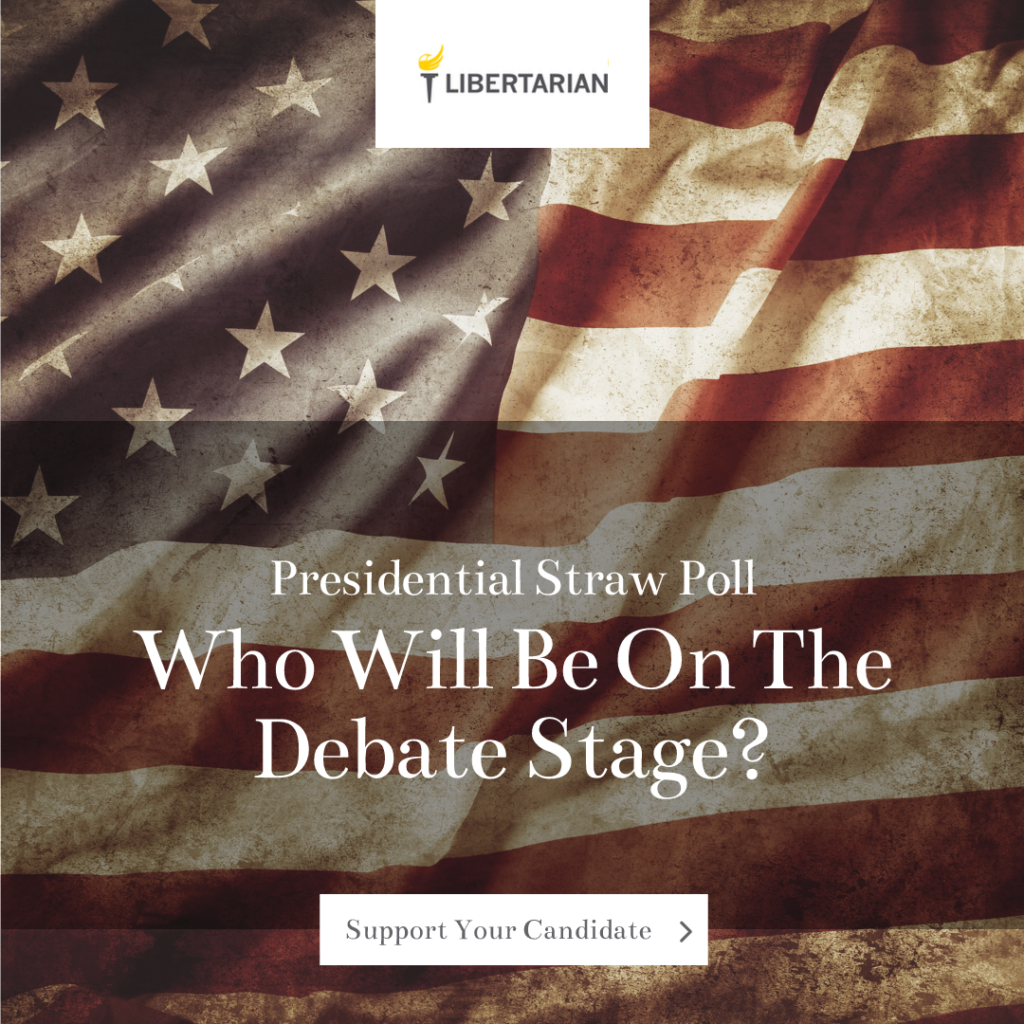
John Sturgeon
The Libertarian Party has championed many cases before the U. S. Supreme Court, including our most recent First Amendment case, and we sympathize with the extraordinary costs of seeking relief. Fundamentally, the federal government has created a system where it restricts liberty through application and enforcement of laws.
“The US Constitution clearly talks about a limit of power for federal government,” said Daniel Fishman, LNC Executive Director. “Appealing that limit of power successfully should not be a right reserved for the wealthy. The LP remains committed to fighting for civil liberties for all and we maintain legal fund at lp.org/legal that people can donate to help us defray costs.
From the Washington Post:
Moose hunter John Sturgeon serves as both inspiration and warning for anyone who has ever gotten worked up over a perceived injustice and vowed to fight it “all the way to the Supreme Court.”
An inspiration because Sturgeon took on the federal government and — not once but twice — beat the odds to get the high court to accept his case and rule in his favor.
Why a warning? Because Sturgeon’s 12-year, only-in-Alaska battle to travel on a forbidden hovercraft through national parkland to his favorite hunting spot cost well north of $1.5 million.
“I had no idea how much it was going to cost, but you start down this slide and there’s no stopping it,” Sturgeon said. “Not many people could do what I did, because they don’t have the financial resources, which I don’t either. But I did have a cause that really ignited people.”
Sturgeon agreed to let The Washington Post examine the details of his costs and the donations to his cause to illuminate what it takes to bring a lawsuit before the Supreme Court.
Among his donors: the Alaska Wildlife and Conservation Fund, the National Rifle Association, the Alaska Conservative Trust, national and international hunting groups, hundreds of ordinary Alaskans and one very wealthy one.
Edward Rasmuson read about Sturgeon’s case, called him up and found him sincere, and then offered to help pay the legal bill. “I maybe gave $250,000 to $300,000 to $400,000 — hell, I don’t know,” Rasmuson said in an interview. “But I’m fortunate. I’m wealthy, I can afford it.”
The money covered things such as the $20,891.89 bill to print legal documents exactly as the Supreme Court requires. To reimburse the $11,063.25 in hotel costs for Sturgeon’s lawyers to hone their strategy at three moot courts in Washington. To pay for 3,691 hours of legal work at the law firms that have represented him since 2011.
At the end of summer, Sturgeon’s supporters boarded a stern-wheeler for a trip down the Chena River for one last fundraiser. It was billed as the “Thanks a Million Victory Cruise.” There were drinks and dinner, tributes to Sturgeon and a silent auction offering uniquely Alaskan items such as a gold nugget and several fur pelts donated by Willy Keppel of the village of Quinhagak, nearly 600 miles away.
“Hope this helps,” wrote Keppel, who said he was strapped for cash but wanted to contribute. “Thank you for taking the fight to the feds!”
Gov. Mike Dunleavy (R) was onboard to call Sturgeon a “hero” (and to submit the winning bid for one of the pelts). To show how broad the support for Sturgeon is, also along were several prominent Alaskans who have signed a petition to remove Dunleavy from office.
Sturgeon’s case resonated because it could bring a long-sought clarification of the Alaska National Interest Lands Conservation Act (ANILCA), with which Congress set aside more than 100 million acres for preservation. Alaskans have argued that Congress did not intend for the land to be regulated like other federal parkland and preserves because the way of life is so different in the Last Frontier.
Sturgeon said he only knew that he didn’t think National Park rangers had the authority to tell him he could not use the hovercraft as he had for years.
“I called the state of Alaska and said, ‘Aren’t you supposed to manage the state’s rivers?’ and they said yes,” Sturgeon recalled. “That’s when I kinda decided I wanted to, maybe, you know, sue the federal government. But I didn’t want a frivolous lawsuit.”
He went to an Anchorage lawyer named Doug Pope and laid out the situation. Pope did some research and came back with good news and bad news.
“Not only do you have a case, but this could go all the way to the Supreme Court,” Pope told Sturgeon.
The bad news: A legal fight like that could take six years or more, and maybe cost about $700,000.
Pope advised instead: “Spend the money on your grandkids. By the time this is done, are you even still going to be moose-hunting, John?”
Turns out he is — he filled the freezer just a couple of weeks ago — and his grandkids will be just fine.
‘Alaska is often the exception, not the rule’
The origins of Sturgeon’s case have been told now in two Supreme Court decisions. In the fall of 2007, he was trying to fix a steering cable on his hovercraft, which was beached on a gravel shoal of the Nation River, within the Yukon-Charley Rivers National Preserve.
Sturgeon for years had used his hovercraft to traverse the shallow rivers to his favorite hunting spot near the Canadian border. But on this day, he was approached by National Park rangers who informed him that the craft was banned in all federal park lands. Not only was he barred from using it to get to the hunting ground, he was told he could not use it to get home.
Sturgeon was forced to drag the hovercraft home, and by then he was ready to sue.
Sturgeon is a businessman, but he also knew how state and federal agencies worked; he was once Alaska’s state forester.
Pope, the lawyer, believed the only place Sturgeon could win was at the Supreme Court. There was precedent at the U.S. Court of Appeals for the 9th Circuit that made victory at a lower court unlikely.
Pope once before had taken a case to the Supreme Court. It lasted 10 years, and he wasn’t ready to do that again. So he provided legal advice throughout the process, but another Anchorage law firm, Ashburn & Mason, became Sturgeon’s primary lawyers.
The firm threw everything into it, said lawyer Matthew Findley.
There was an unsuccessful trip to district court ($149,694 in legal fees and costs) and then an appeal to the 9th Circuit ($82,023), where Sturgeon lost again.
Sturgeon acknowledges he was about ready to give up at that point, knowing that the odds of getting a case accepted at the Supreme Court range from about 1 to 3 percent.
But the 9th Circuit’s decision about the federal government’s power managed to unite usual foes. The Alaska Outdoor Council, representing hunters, urged him to forge on, as did the Alaska Native corporations, which represent natives and their right to subsistence fishing and hunting.
“Alaska Outdoor Council is at this end of the spectrum and the Native corporations are at this end of the spectrum, but they each gave $30,000 and that’s what got me to the Supreme Court the first time,” Sturgeon said.
He spent about $10,000 to bring his whole family for oral arguments in January 2016. The grandkids recouped a little by shoveling walks on the Capitol Hill block where they rented a house for the hearing.
Three months later, the Supreme Court ruled for Sturgeon.
Chief Justice John G. Roberts Jr. said the 9th Circuit judges had gone down the wrong path in their analysis and ignored “vital issues of state sovereignty, on the one hand, and federal authority, on the other.”
ANILCA requires certain accommodations — commercial fishing, the use of snow-machines and airplanes, for instance — reflecting “the simple truth that Alaska is often the exception, not the rule,” Roberts wrote.
But all the ruling meant for Sturgeon was that he got another chance at the 9th Circuit.
His legal bill at that point was about $700,000.
‘He took on the biggest of foes’
Sturgeon is a low-key 73-year-old, though he’s got a harrowing story, which he tells matter-of-factly, about killing a bear that tried to invade his hunting cabin.
In a blue blazer with a Rotary Club lapel pin, Sturgeon traveled the state talking about his case and is now well-enough known that the governor wonders if he has a political career in mind. (He doesn’t, he said.)
Sturgeon said he never really had to ask people to contribute to his cause — they just offered — and he directed them to send the money directly to a fund set up by the law firm.
His lawyer, Findley, says people react to Sturgeon’s authenticity.
“I had a lot of friends on the left saying, ‘Oh, what are you doing taking this federal overreach case?’ ” Findley said. “And then they meet John and they say he is one of the classiest, nicest people they’ve ever met. I think his personality came through in the suit. He was asking to restore the balance. That’s a theme we had. It’s way more complicated than we’re just fighting the federal government.”
His supporters are a bit more fiery.
“For 12 long years, John Sturgeon has fought for something he believes in, something that is bigger than himself,” said Craig Compeau, who sells boats and ATVs in Fairbanks and became one of Sturgeon’s biggest supporters.
“He took on the biggest of foes, the United States federal government.”
Dunleavy agreed. Alaskans found Sturgeon’s case appealing because he was fighting the idea that “folks thousands of miles away know what’s better for Alaska than the people who live here, the idea that folks thousands of miles away believe that we don’t know how to live in Alaska, that we don’t know how to take care of Alaska, we don’t know how to appreciate Alaska and that we need to be managed.”
Sturgeon’s second trip to the 9th Circuit ($56,412 in legal fees and costs) yielded another loss. But by then there was no question that he would try again at the Supreme Court.
Rasmuson, a former president of the National Bank of Alaska and a former University of Alaska regent with a family foundation well-known in the state, was game.
“I’ve found over the years that if you have the money and you have the willpower and you have good legal advice, you can usually beat the bastards,” Rasmuson said.
The Supreme Court was game, too, accepting Sturgeon’s petition ($155,000 in legal fees and costs) to review the second 9th Circuit opinion.
Oral argument was Nov. 6, 2018, and on March 26 the court overturned the appeals court and ruled for Sturgeon.
Congress intended for Alaska to be treated differently, Justice Elena Kagan wrote for the unanimous court, and some rules that apply elsewhere do not apply there. (She noted the court was not disturbing lower court decisions on subsistence fishing and hunting for Alaska Natives.)
“For that reason, park rangers cannot enforce the service’s hovercraft rule on the Nation River,” Kagan wrote. “And John Sturgeon can once again drive his hovercraft up that river to Moose Meadows.”
At the fundraiser cruise, Sturgeon told the crowd his own lawyers couldn’t have written the court’s decision any better.
“It reads like a book, and Justice Kagan did a really good job,” he said, adding, “and she’s a kinda liberal member of the court.”
As the guests disembarked, many ignored the light rain to pose for pictures with Sturgeon’s hovercraft, which was in the parking lot. It has been refurbished and renamed to honor the unanimous rulings. It is now the “9-0.”



